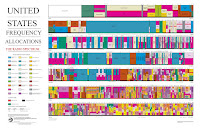Over the years, as I have contemplated writing my annual Independence Day message, I have found myself, many times, turning to Abraham Lincoln. This year, coming on the heels of the Supreme Court's decision regarding "affirmative action" in college admissions decisions in Students for Fair Admissions, this is especially so.
Born in 1809, Lincoln was a generation (or two, depending on how you count) removed from the Founding generation. But there is no doubt that, among all the post-Founding era presidents, Lincoln understood, and drew inspiration from, the true meaning of the self-evident "Truths" proclaimed in the Declaration of Independence – "that all Men are created equal, that they are endowed by their Creator with certain inalienable Rights, that among these are Life, Liberty, and the Pursuit of Happiness."
In my Independence Day 2017 message, I showed how, in his little known but eloquent address at Peoria in October 1854, Lincoln grounded his extended argument against slavery firmly in the philosophy and principles expounded in the Founders’ Declaration of 1776, not the Constitution of 1787. Invoking the Declaration's self-evident truths, Lincoln said this in 1854: "What I do say is, that no man is good enough to govern another man, without that other's consent. I say this is the leading principle---the sheet anchor of American republicanism."
Unsurprisingly, what Lincoln did say that day was memorable. Most notably, and most pertinent as we prepare to celebrate Independence Day 2023, Lincoln declared: "I have never had a feeling politically that did not spring from the sentiments embodied in the Declaration of Independence."
Explaining what he meant by invoking the sentiments embodied in the Declaration, Lincoln declared: "It was not the mere matter of the separation of the Colonies from the motherland; but that sentiment in the Declaration of Independence which gave liberty, not alone to the people of this country, but, I hope, to the world, for all future time. It was that which gave promise that in due time the weight would be lifted from the shoulders of all men."
The citizenry of our country is riddled with deep divisions, some involving matters of high principle and others not so much so. And, of course, our politics reflect these divisions, as it always has in our democracy, and on matters of principle that is appropriate. But I can't help believing that perhaps our politicians could find more common ground if every day, or if only occasionally, they said to themselves: "I have never had a feeling politically that did not spring from the sentiments embodied in the Declaration of Independence."
Towards the end of his remarks in Philadelphia on that day in February 1861 at the site of the signing of the Declaration of Independence, Lincoln said that if the country could not be saved without giving up on the fundamental principle of equality of all men, "I would rather be assassinated on this spot than surrender it."
Lincoln was assassinated on April 15, 1865, little more than four years later – but not before the Declaration's sentiments, which so inspired him and of which he so often spoke, had been vindicated by the Union's victory in the bloody Civil War.
I respect the views of those who disagree with Chief Justice John Roberts' majority opinion in Students for Fair Admissions. But, for me, it was time for the Supreme Court to return to the foundational equality principle at the core of the Declaration of Independence and the Constitution's Fourteenth Amendment. As the Court emphasized, pursuant to the Equal Protection Clause: "Eliminating racial discrimination means eliminating all of it."
On this Independence Day, it's appropriate to reflect on the meaning of the Declaration's self-evident truths.
Best wishes to you and your family for a safe and meaningful Independence Day 2023!
My previous Independence Day messages are here: 2007, 2008, 2009, 2010, 2011, 2012, 2013, 2014, 2015, 2016, 2017, 2018, 2019, 2020, 2021, 2022.

















